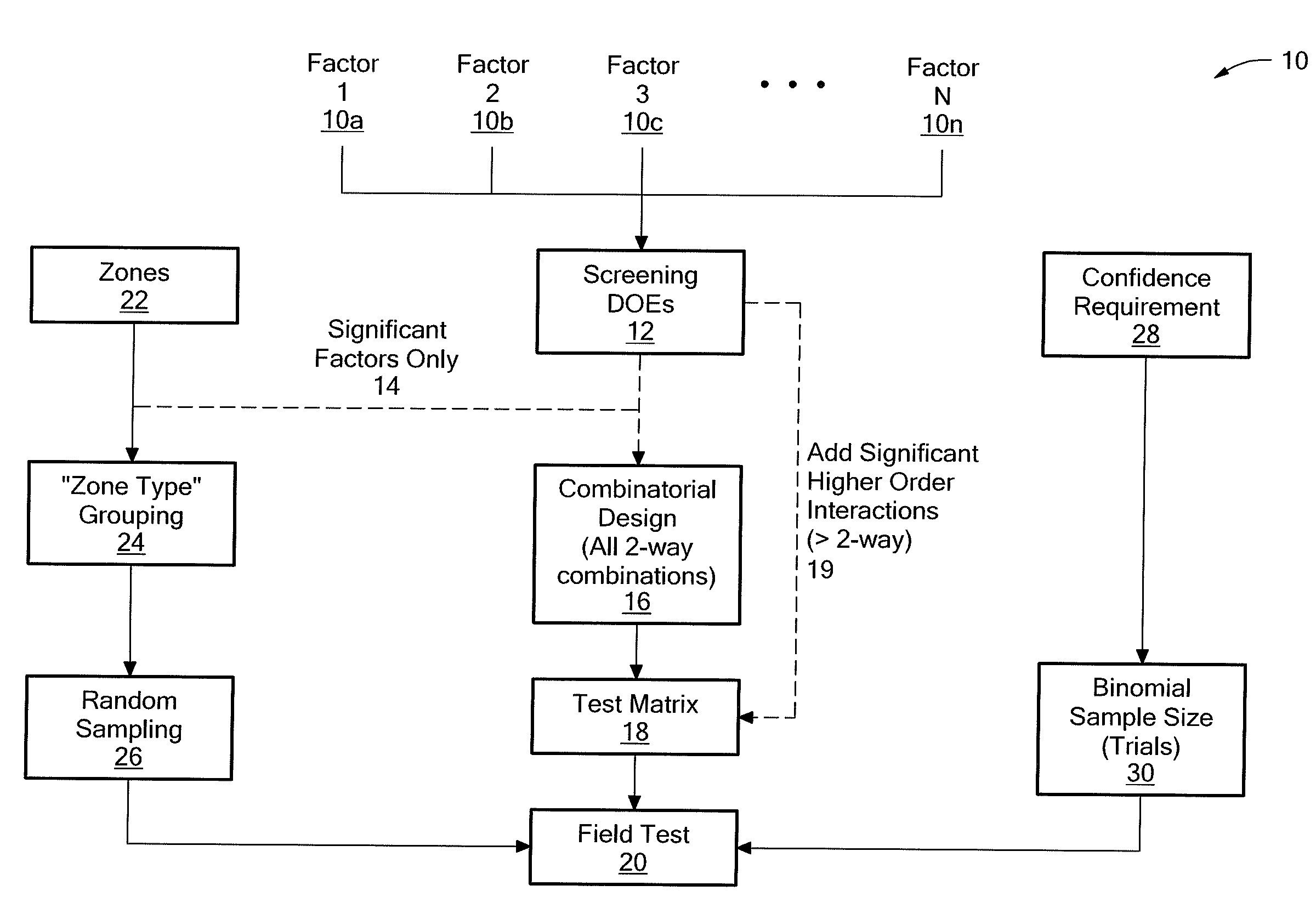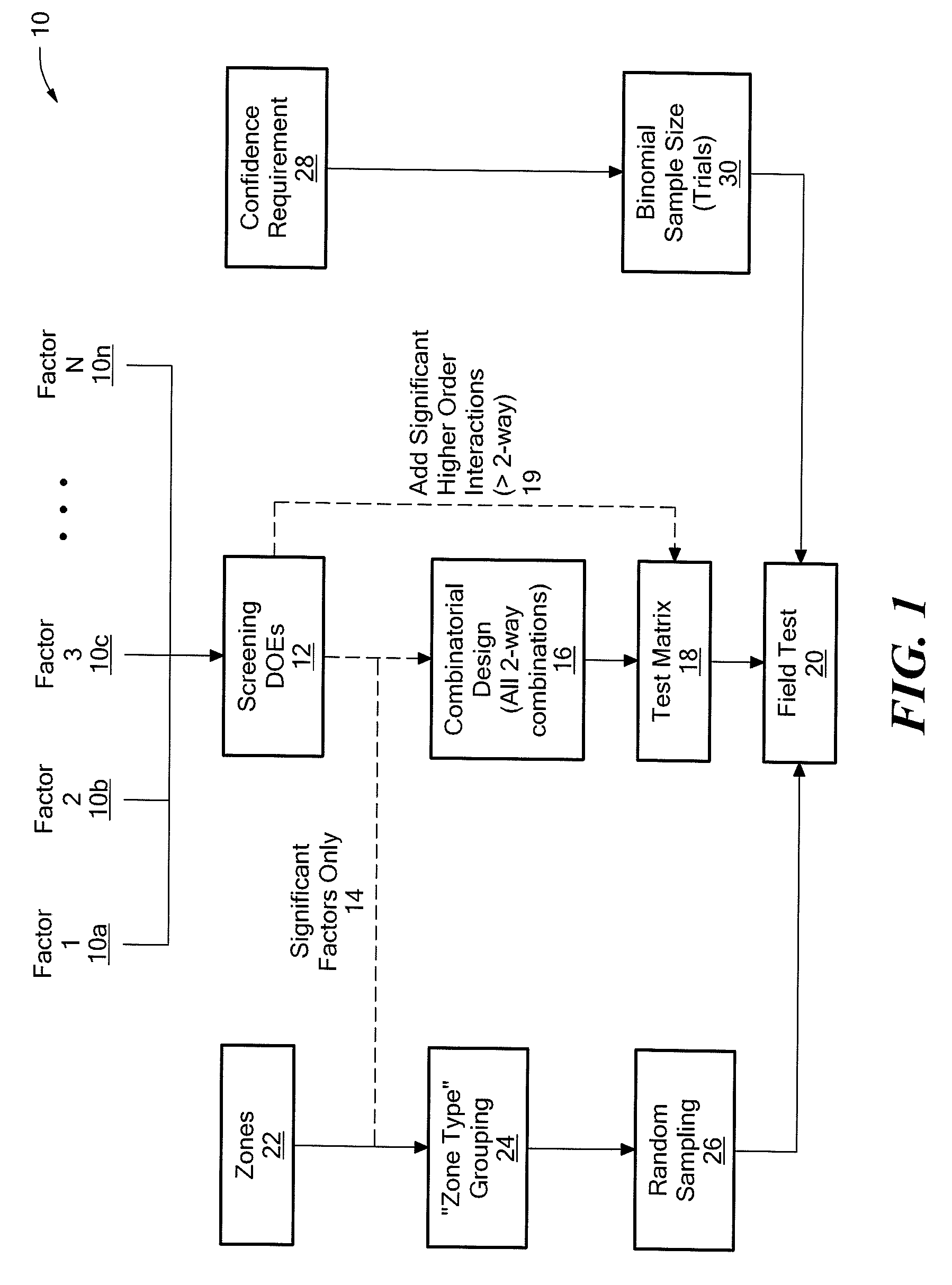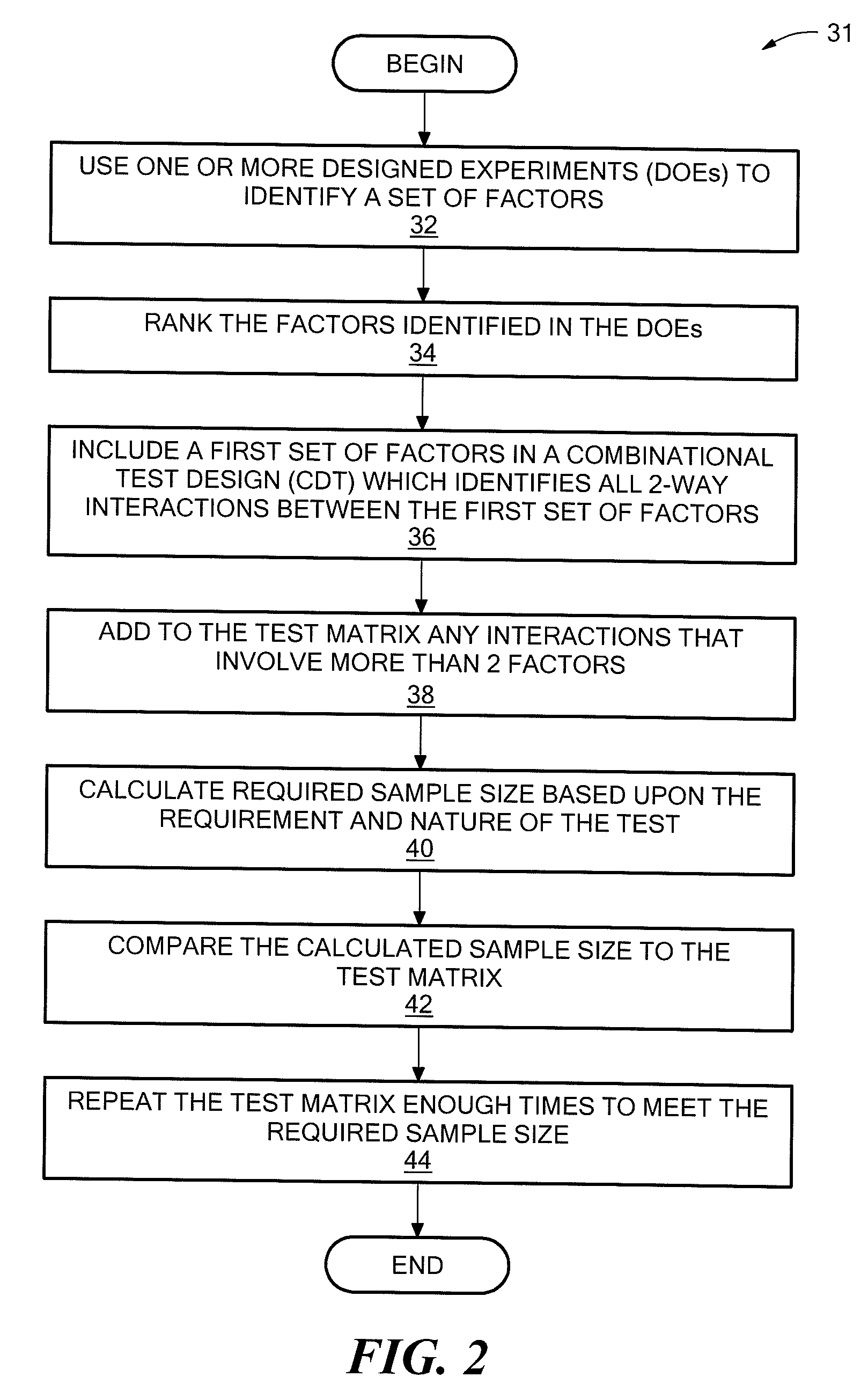Method and Apparatus for Generating a Test Plan Using a Statistical Test Approach
a statistical test and test plan technology, applied in special purpose recording/indication apparatus, error detection/correction, instruments, etc., can solve the problems of relatively difficult to thoroughly test the system, undesirable system performance, system users are not certain which combinations fall into that category, etc., and achieve the effect of less expensiv
- Summary
- Abstract
- Description
- Claims
- Application Information
AI Technical Summary
Benefits of technology
Problems solved by technology
Method used
Image
Examples
Embodiment Construction
[0032]Experimental design or deign of experiments (DOE) has been defined as an approach which utilizes purposeful changes of inputs (factors) to a process (or activity or system) in order to observe corresponding changes in outputs (or responses) of the process (or activity or system). The process (or activity or system) is defined as some combination of machines, materials, methods, people, environment, and measurement which, when used together, perform a service, produce a product, or perform a task. Thus, DOE is a scientific approach which allows a researcher to gain knowledge in order to better understand a process and to determine how inputs to a system (including a process) affect the system response(s) or output(s).
[0033]Referring now to FIG. 1, a plurality of factors 1-N and identified with reference numerals 10a-10N, generally denoted 10, are used to provide a design of experiments (DOE) test matrix 12. In this exemplary embodiment, a screening DOE 12 is used although those...
PUM
 Login to View More
Login to View More Abstract
Description
Claims
Application Information
 Login to View More
Login to View More - R&D
- Intellectual Property
- Life Sciences
- Materials
- Tech Scout
- Unparalleled Data Quality
- Higher Quality Content
- 60% Fewer Hallucinations
Browse by: Latest US Patents, China's latest patents, Technical Efficacy Thesaurus, Application Domain, Technology Topic, Popular Technical Reports.
© 2025 PatSnap. All rights reserved.Legal|Privacy policy|Modern Slavery Act Transparency Statement|Sitemap|About US| Contact US: help@patsnap.com



